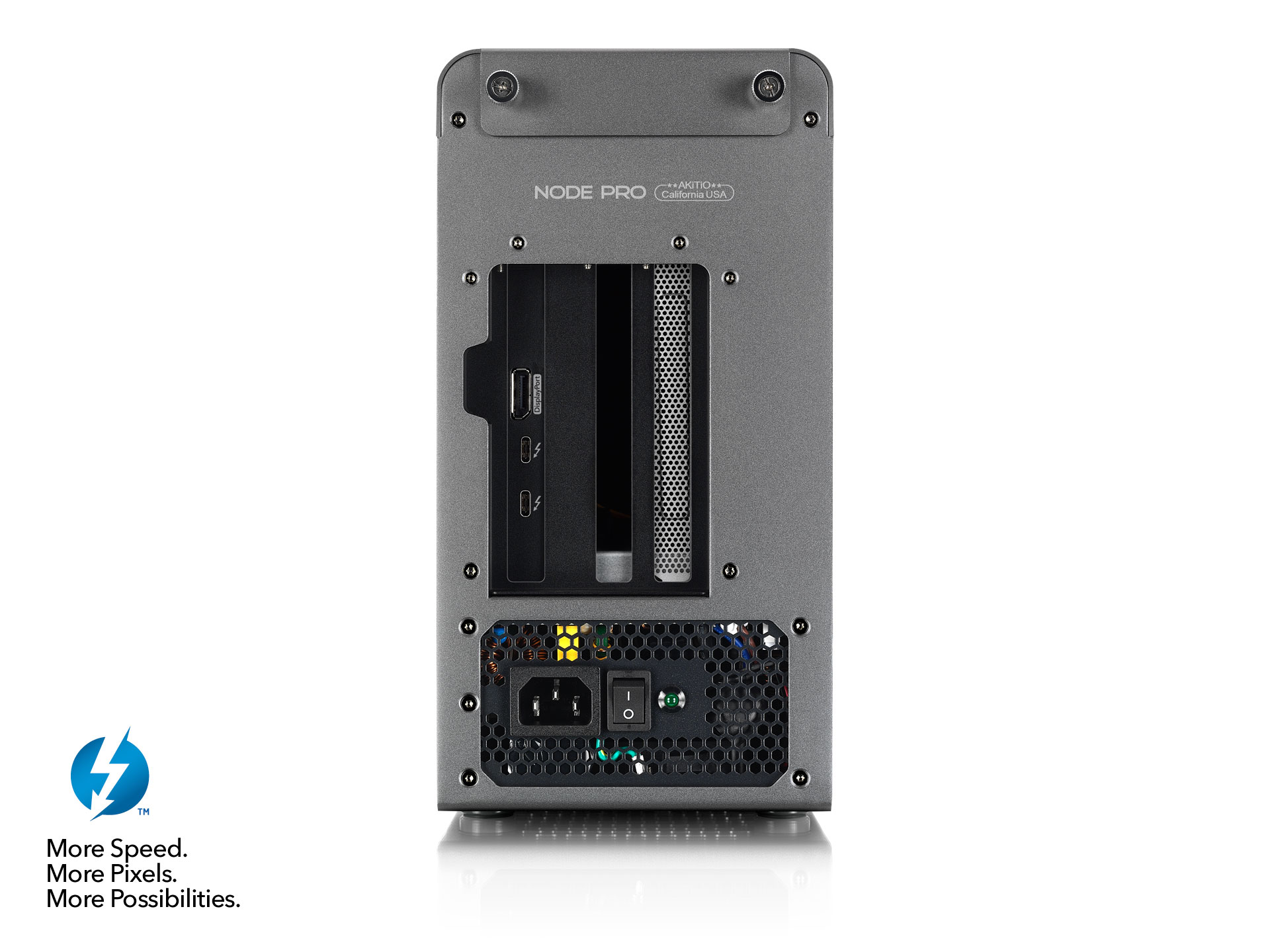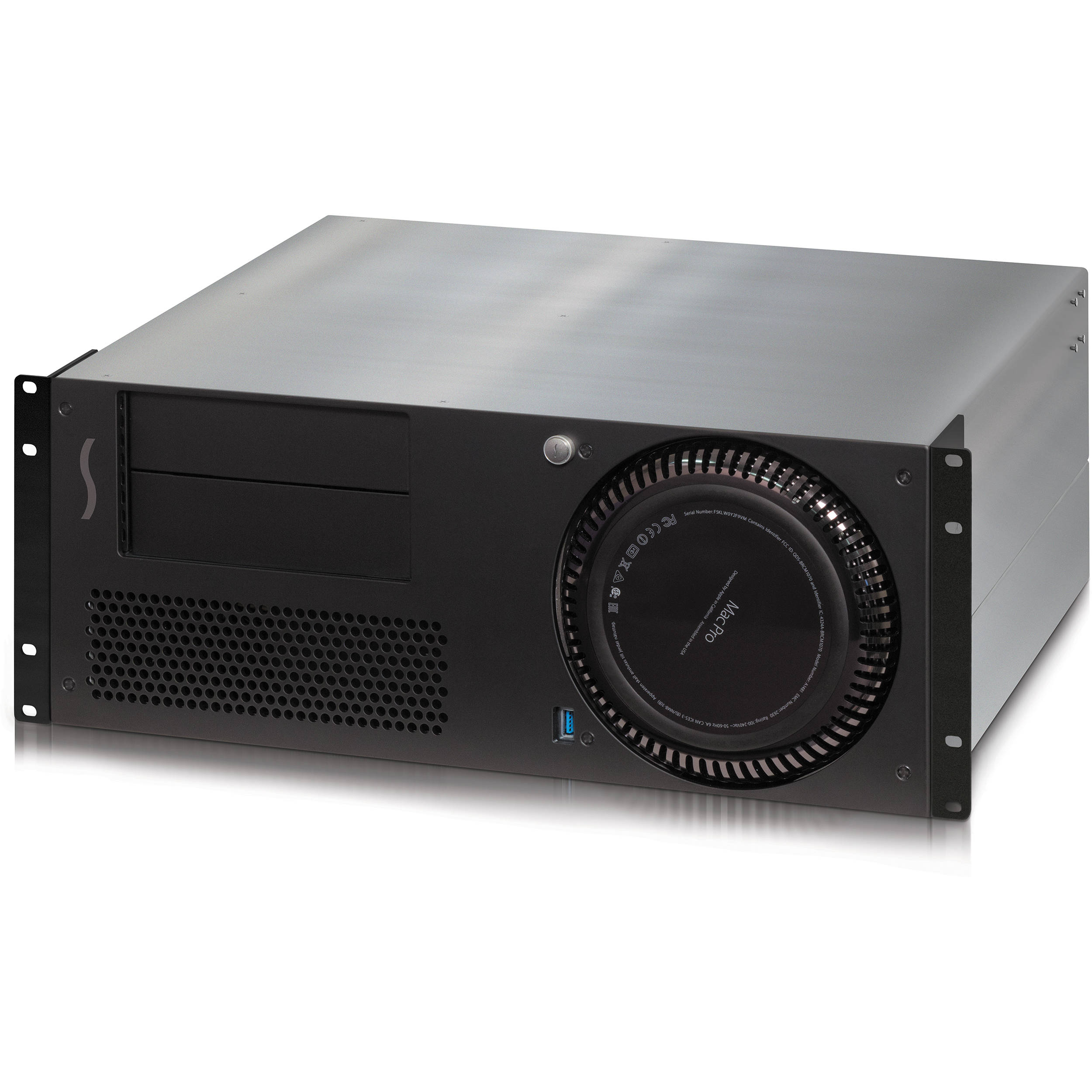Thunderbolt For Mac Pro Pcie
The Mac Pro introduced in 2019 has eight PCIe slots:
Use PCIe Expansion Cards with any Thunderbolt Equipped Mac or Windows Mercury Helios is the ideal way to access your PCIe cards and is perfect for video capture and editing, media transcoding, audio workflows, ultra-fast networking, data storage, and more via its Thunderbolt 2 interface. Mac Pro 6,1 ‘Trash Can’ Late 2013 Mac Pro 6,1 12-Core 'Ivy Bridge' 2.7 GHz. Late 2013 Mac Pro 6,1 8-Core 'Ivy Bridge' 3.0 GHz. Late 2013 Mac Pro 6,1 6-Core 'Ivy Bridge' 3.5 GHz. Late 2013 Mac Pro 6,1 4-Core 'Ivy Bridge' 3.7 GHz. PCIe Gen2 Chassis: Magma EB3T - Supports up to three HDX cards or one HD Native card. Connect a Thunderbolt device to the Thunderbolt port. Uninstall the existing Thunderbolt Software. This should also uninstall the driver. Open the Start menu and click Settings. Select Apps & features. Select Thunderbolt Software and click Uninstall. Open Device Manager by pressing the Windows key + X, and then select Device Manager. Its inclusions across the entire Mac line make Thunderbolt 3 docks usable in many instances, but arguably its main audience is for buyers of the MacBook Pro range, to expand the selection of ports.
- Four double-wide slots
- Three single-wide slots
- One half-length slot preconfigured with the Apple I/O card
Mac Pro includes one or two Radeon Pro MPX Modules that occupy slots 1-2 and slots 3-4. You can choose your MPX Modules when you order your Mac Pro or order them separately from Apple. Learn how to install PCI cards in your Mac Pro (2019).
Apple AMD Radeon MPX Modules
Apple currently has four different Mac Pro Expansion (MPX) Modules that contain AMD Radeon Pro graphics processing units (GPUs). Radeon Pro MPX Modules can use slots 1-2 and slots 3-4, and you can install one or two of each module:
- Radeon Pro 580X MPX Module: one module only
- Radeon Pro W5700X MPX Module: one or two modules
- Radeon Pro W5500X MPX Module: one or two modules
- Radeon Pro Vega II MPX Module: one or two modules
- Radeon Pro Vega II Duo MPX Module: one or two modules

You can use Radeon MPX Modules along with other third-party PCIe graphics cards. If you use Boot Camp, using a Radeon MPX Module and a third-party AMD graphics card isn't supported when your Mac is using Windows. Learn about using AMD graphics cards with Microsoft Windows on Mac Pro (2019).
Apple I/O card
Mac Pro comes with the Apple I/O card, which has two Thunderbolt 3 ports, two USB-A ports, and a 3.5mm headphone jack. The Apple I/O card comes preinstalled in slot 8 and can't be installed in another slot.
Third-party PCIe cards
You can install many different PCIe cards in your Mac Pro, such as fibre channel cards, fibre networking cards, and pro video and audio interface cards. The PCIe bus on your Mac Pro provides up to 300W auxillary power. If your PCIe card requires additional power, such as a GPU, use the Belkin Aux Power Cable.
Mac Pro supports the same GPUs that are supported by external graphics processors (eGPUs). If you use Boot Camp and want to install a NVIDIA card to use in Windows on your Mac, don't install the card in slot 2. Learn about using AMD graphics cards with Microsoft Windows on Mac Pro (2019).
Some older PCI cards might use 32-bit Option ROMs that aren't compatible with your Mac Pro. If you install a PCI card that uses 32-bit option ROMs, your Mac Pro might not start up correctly.
Afterburner
Afterburner is a hardware accelerator card made by Apple. Learn more about Afterburner.
RAID cards
If you want to add additional storage, you can install a third-party RAID card, such as a SAS RAID card, or you can install the Promise Pegasus R4i 32TB RAID MPX Module in one of the two MPX bays. If you use Boot Camp on your Mac, Windows doesn't support Apple software RAID volumes.
Learn more
Card capacity and size
Mac Pro has eight PCIe x16* sized slots that accept many different types of PCIe cards:
- Slot 1: up to x16 lanes (double-wide)
- Slot 2: up to x8 lanes (double-wide)
- Slot 3: up to x16 lanes (double-wide)
- Slot 4: up to x16 lanes (double-wide)

- Slot 5: up to x16 lanes (single-wide)
- Slot 6: up to x8 lanes (single-wide)
- Slot 7: up to x8 lanes (single-wide)
- Slot 8: up to x4 lanes (half-length)
Mac Pro Expansion (MPX) Modules can use up to two slots each — in slots 1-2 and slots 3-4. Mac Pro comes with the Apple I/O card preinstalled in slot 8 which contains two Thunderbolt 3 ports, two USB-A ports, and a 3.5 mm headphone jack. Learn about PCIe cards you can install in your Mac Pro (2019).
Check available slots
To check the status of each slot, choose Apple menu > About This Mac, then click the PCI Cards tab.
By default, Mac Pro automatically balances bandwidth between all of the cards across the two PCIe pools. You can use Expansion Slot Utility to make manual adjustments to pool allocations.
If you install two Radeon Pro Vega II MPX Modules, you can connect them together using Infinity Fabric Link. Learn how to connect two Radeon Pro Vega II MPX Modules.
Installing PCIe cards
Learn how to remove the housing or top cover of your Mac Pro and install a PCIe card.

Remove the housing or top cover
Follow the steps to remove the housing on Mac Pro (2019) or the top cover on Mac Pro (Rack, 2019).
Mac Pro (2019)
- Shut down your Mac Pro.
- Wait approximately 5-10 minutes for the computer to cool down.
- Unplug all cables except the power cord from your computer.
- Touch the metal housing on the outside of Mac Pro to discharge any static electricity, then unplug the power cord.
Always discharge static before you touch parts or install components inside your Mac Pro. To avoid generating static, don't move around the room until you finish installing the cards and slide the enclosure back onto the computer. - Flip the top latch up, then twist left to unlock the housing.
- Lift the housing straight up and off of Mac Pro. Carefully set it aside.
Mac Pro won't turn on when its cover is removed.
Mac Pro (Rack, 2019)
- Shut down your Mac Pro.
- Wait approximately 5-10 minutes for the computer to cool down.
- Unplug all cables except the power cord from your computer.
- Touch the metal housing on the outside of Mac Pro to discharge any static electricity, then unplug the power cord.
Always discharge static before you touch parts or install components inside your Mac Pro. To avoid generating static, don't move around the room until you finish installing the cards and slide the top cover back onto the computer. - Slide the top cover release latches to the unlocked position, lift the top cover and pull it away from the front plate, then set it aside.
Install a PCIe card
- Slide the lock to the unlocked position.
- Using a Phillips-head screwdriver, unscrew and remove any brackets and slot covers covering the slots where you want to install your card.
- Remove your new card from its static-proof bag and hold it by its corners. Don't touch the gold connectors or the components on the card.
Use only PCIe modules that are safety certified (CSA, UL, or equivalent) and specifically state that they are compliant with the industry standard PCIe specification. Use of non-certified compliant modules may not keep different input power sources separated, resulting in a possible burn hazard. - Make sure the card pins are in line with the slot as you insert the card into the PCIe slot.
- Slide the lock to the locked position.
- Reinstall any side brackets you removed, then tighten the screws on the bracket.
Reinstall the housing or top cover
Follow the steps to reinstall the housing on Mac Pro (2019) or the top cover on Mac Pro (Rack, 2019).
Mac Pro (2019)
- Carefully lower the housing over Mac Pro.
- After the housing is fully seated, twist the top latch right and flip it down to lock it.
Top: Locked position (dots match)
Bottom: Unlocked position (dots do not match) - Connect the power cord, display, and any other peripherals.
Mac Pro (Rack, 2019)
- Align the edge of the top cover with the slot in the front plate, then firmly press near the release latches and listen for them to click into place.
- Connect the power cord, display, and any other peripherals.
Turn on third-party drivers
Some third-party PCIe cards require a driver before they can be used in macOS. After you install a driver for a third-party PCIe card, restart your Mac Pro, then turn the driver on:
- Choose Apple menu > System Preferences, then click Security & Privacy.
- Click the lock and authenticate as an administrator.
- Click the Allow button.
- Restart your Mac.
Use Expansion Slot Utility
When you install or remove PCIe cards on your Mac Pro, EFI detects the cards in each slot and allocates bandwidth between the two pools to maximize throughput. Expansion Slot Utility lets you view and change how your cards are allocated.
Use Automatic Bandwidth Configuration
By default, your Mac Pro uses Automatic Bandwidth Configuration to automatically manage how the cards are allocated to each of the two pools.
Assign pool allocations manually
If you want to manually assign the pool allocations for your cards, turn off Automatic Bandwith Configuration and choose a pool for each card. For example, you might want to give a single card 100 percent allocation of pool A.
Whenever you make changes to pool allocation, Expansion Slot Utility prompts you to save your changes and restart your Mac before they take effect.
Get help installing PCIe cards
Learn what to do if you get a PCIe card misconfigured error or your Mac Pro won't turn on after installing a PCIe card.
Resolve PCIe card misconfigured errors
If your PCIe cards can be installed in different slots to provide better performance, you'll see a PCIe card misconfigured notification after your Mac Pro starts up:
Thunderbolt Pcie Expansion Box
Click Learn More, which opens the PCI Cards tab of About This Mac. Then, click Expansion Slot Utility to view recommendations on how you should reconfigure your cards.
If your Mac Pro doesn't start
If your Mac Pro doesn't start up and the status indicator light flashes amber twice after installing a PCIe card, the card might not be compatible with your Mac Pro or you might have too many 32-bit PCIe cards installed.
Thunderbolt Pcie Expansion
If you recently installed one or multiple PCIe cards, remove each card one at a time and try turning on your Mac Pro after each card removal.
Thunderbolt Pcie Card For Mac Pro
Learn more
